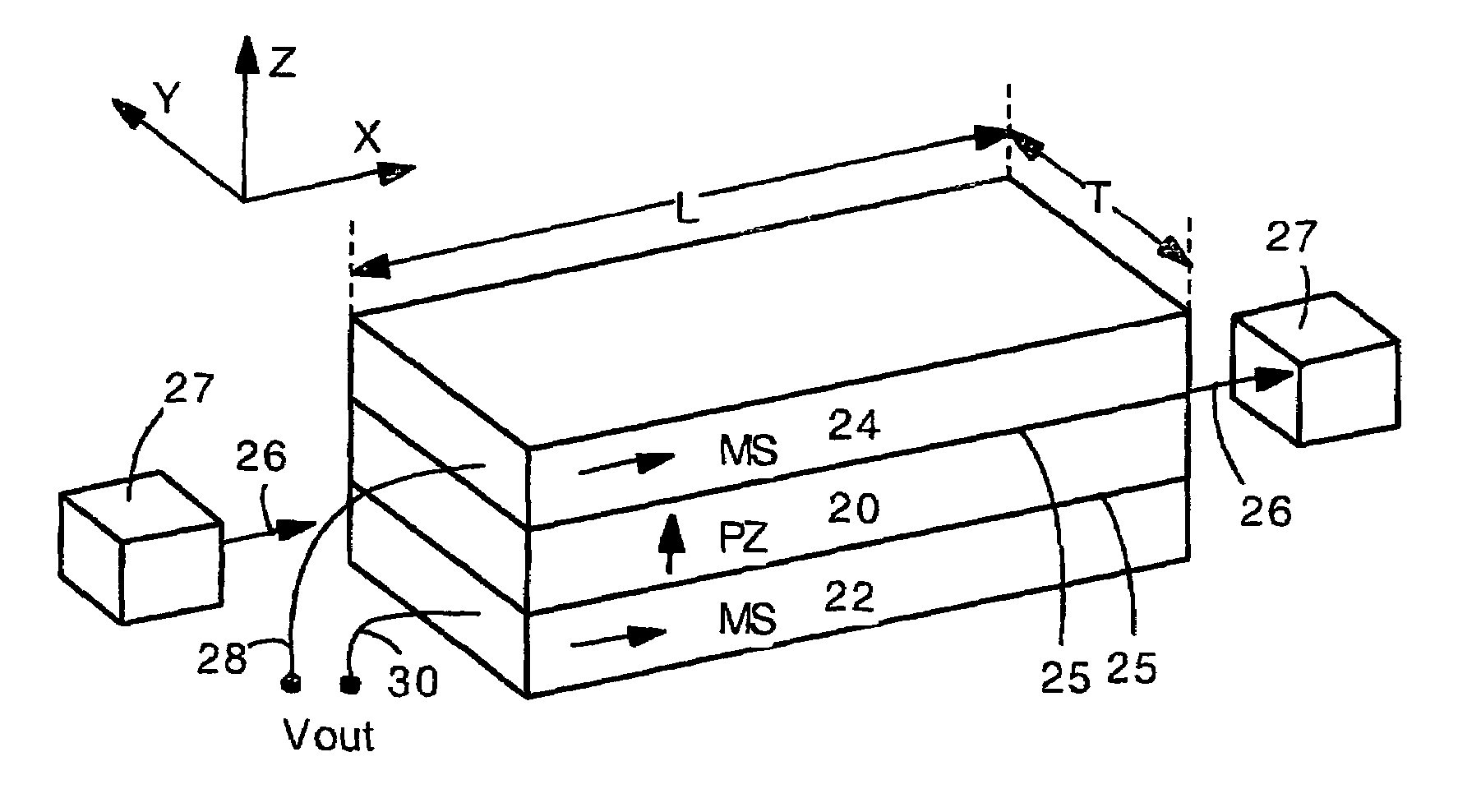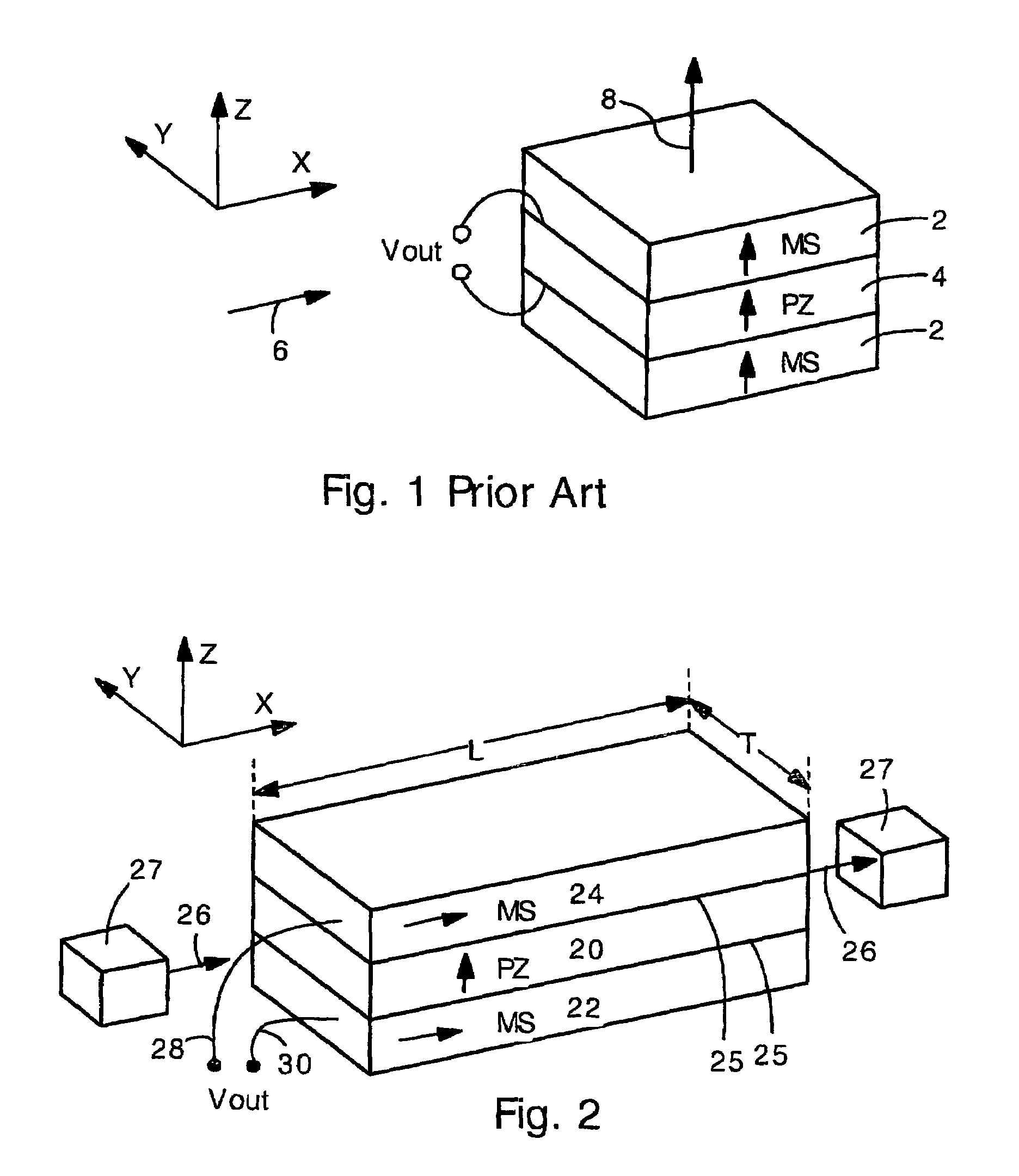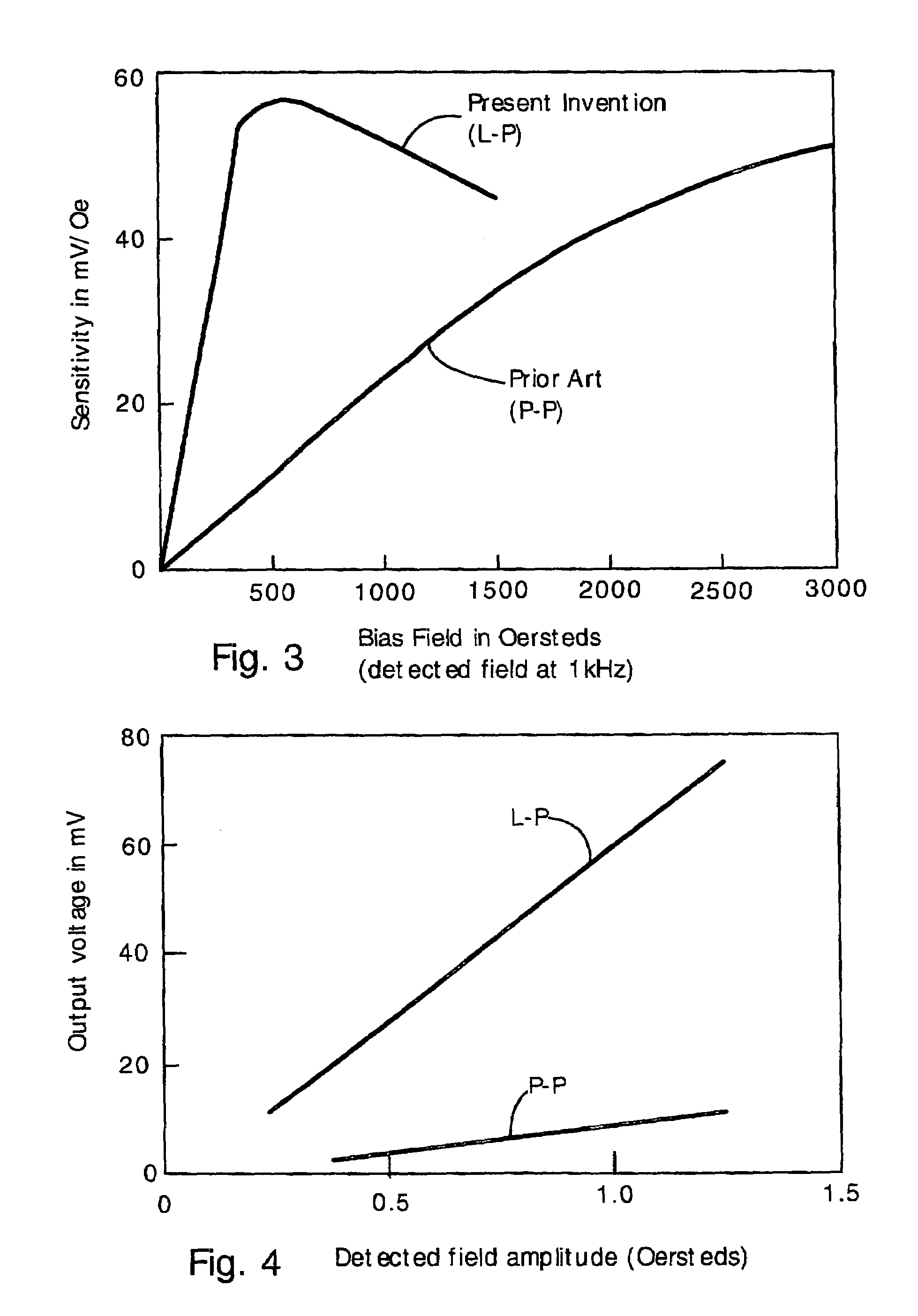Magnetoelectric magnetic field sensor with longitudinally biased magnetostrictive layer
a magnetic field sensor and longitudinal bias technology, applied in the field of magnetic field sensors, can solve the problems of inability to achieve a sensitivity of 10 pt/hz in practice, high cost and power consumption, and the excess of superconducting quantum interference devices (squids)
- Summary
- Abstract
- Description
- Claims
- Application Information
AI Technical Summary
Benefits of technology
Problems solved by technology
Method used
Image
Examples
Embodiment Construction
[0025]The present invention provides a magnetoelectric magnetic field sensor with extremely high sensitivity and low operating power requirements. The present sensor is sensitive enough to potentially provide long range (e.g. 0.01–1 km) sensing of vehicles and shorter range (<1 m) biomedical imaging (e.g. magnetoencephalographic imaging and magnetocardiac imaging).
[0026]The present sensor has laminated magnetostrictive (MS) and piezoelectric (PZ) layers. An applied magnetic field strains the MS layer, which strains the PZ layer, thereby creating a detected output voltage. Significantly, the MS layer is magnetized by a bias field in a direction parallel to the plane of the MS layer (a longitudinal direction). Also, the magnetization layer has a length in the direction parallel with the magnetization that is greater than the transverse width. Additionally, the MS layers and PZ layers have an optimum thickness ratio for obtaining a maximum sensitivity. These three features provide exce...
PUM
 Login to View More
Login to View More Abstract
Description
Claims
Application Information
 Login to View More
Login to View More - R&D
- Intellectual Property
- Life Sciences
- Materials
- Tech Scout
- Unparalleled Data Quality
- Higher Quality Content
- 60% Fewer Hallucinations
Browse by: Latest US Patents, China's latest patents, Technical Efficacy Thesaurus, Application Domain, Technology Topic, Popular Technical Reports.
© 2025 PatSnap. All rights reserved.Legal|Privacy policy|Modern Slavery Act Transparency Statement|Sitemap|About US| Contact US: help@patsnap.com



